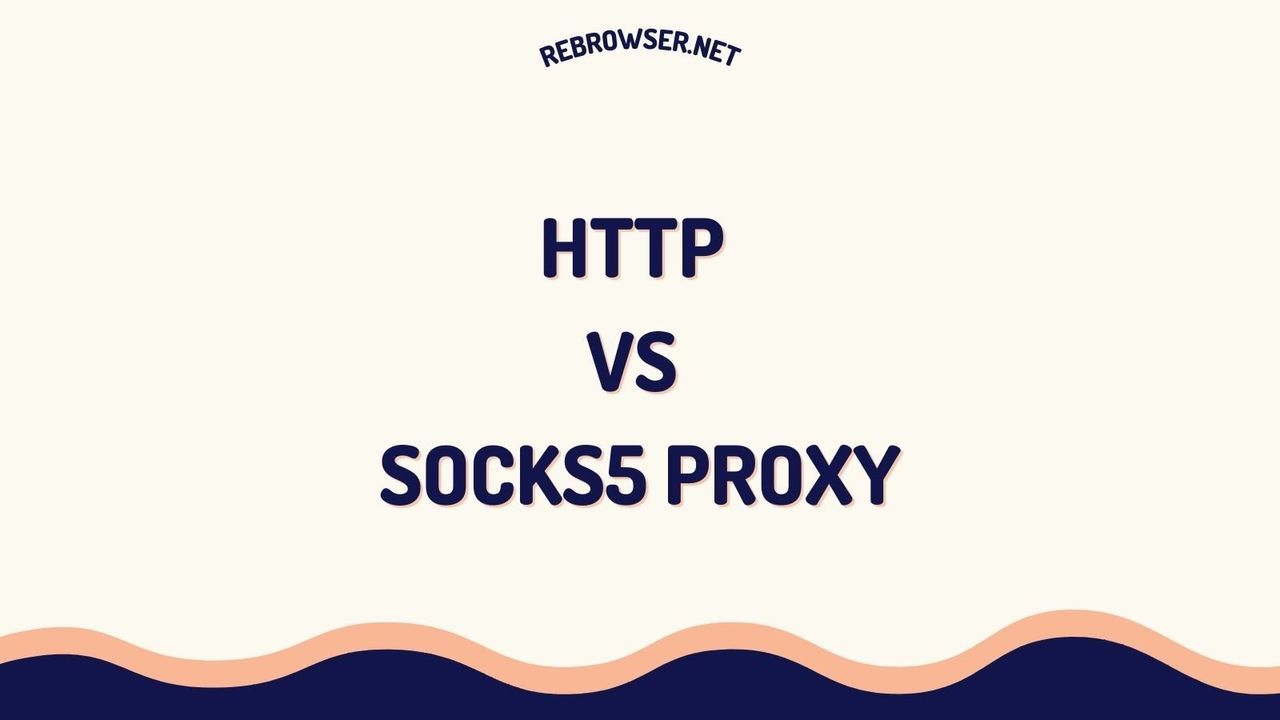Python XPath Selectors Guide: Master Web Scraping & XML Parsing
Key Takeaways
- XPath is a powerful query language for selecting nodes from XML/HTML documents, offering more flexibility than CSS selectors
- The lxml library is the recommended way to use XPath in Python, providing excellent performance and full XPath support
- XPath expressions can navigate document trees in any direction and use powerful functions for complex selections
- Common use cases include web scraping, data extraction, and XML document processing
- Best practices include error handling, performance optimization, and proper HTML parsing
Introduction
Whether you're building a web scraper, processing XML documents, or working with HTML content, understanding XPath selectors in Python is crucial for efficient data extraction. This guide covers everything from basic concepts to advanced techniques, helping you master XPath for your Python projects.
According to recent surveys, XPath remains one of the most popular tools for web scraping, with over 68% of developers preferring it for complex data extraction tasks. This comprehensive guide will help you understand why XPath is so widely used and how you can leverage its power in your Python applications.
What is XPath?

XPath (XML Path Language) is a query language designed to navigate through elements and attributes in XML documents. While originally created for XML, it's equally powerful for HTML parsing and has become an essential tool in web scraping. XPath treats an XML or HTML document as a tree structure, allowing you to traverse through its various nodes and attributes with precision.
Why Choose XPath Over CSS Selectors?
- More powerful selection capabilities (can traverse up the DOM tree)
- Built-in functions for complex selections
- Ability to select elements based on their content
- Support for complex conditions and patterns
- Better performance for complex queries
- More flexible attribute selection
- Support for mathematical operations and functions
Understanding XML/HTML Document Structure
Before diving into XPath, it's essential to understand how XML and HTML documents are structured. These documents follow a tree-like hierarchy:
<html>
<head>
<title>Sample Page</title>
</head>
<body>
<div class="container">
<h1>Main Title</h1>
<p>Content paragraph</p>
</div>
</body>
</html>
Setting Up Your Environment
To get started with XPath in Python, you'll need to install the required libraries. Here's a complete setup guide:
# Create a virtual environment (recommended) python -m venv xpath-env source xpath-env/bin/activate # On Windows: xpath-env\Scripts\activate # Install required packages pip install lxml # Core XML/HTML processing library pip install requests # For making HTTP requests pip install parsel # Optional: Provides a more consistent API for web scraping pip install beautifulsoup4 # Optional: For additional HTML parsing capabilities
Verifying Your Installation
import lxml
import requests
import parsel
print(f"lxml version: {lxml.__version__}")
print(f"requests version: {requests.__version__}")
print(f"parsel version: {parsel.__version__}")
Basic XPath Syntax
Understanding XPath syntax is crucial for effective node selection. Here's a detailed breakdown of XPath expressions:
| Expression | Description | Example |
|---|---|---|
// |
Select nodes anywhere in the document | //div - Selects all div elements |
/ |
Select from the root node | /html/body - Selects body under root |
. |
Select the current node | .//p - Selects p elements under current node |
.. |
Select the parent node | ../sibling - Selects sibling elements |
@ |
Select attributes | //@class - Selects all class attributes |
XPath Axes
XPath axes define the relationships between nodes:
ancestor::- Selects all ancestors of current nodedescendant::- Selects all descendants of current nodefollowing::- Selects everything after closing tag of current nodepreceding::- Selects everything before opening tag of current nodeself::- Selects current nodeparent::- Selects parent of current node
Using XPath with Python's lxml Library

The lxml library is the most efficient and feature-rich option for working with XPath in Python. Here's a comprehensive example:
from lxml import etree
import requests
class XPathParser:
def __init__(self, url):
self.url = url
self.tree = None
def fetch_and_parse(self):
try:
response = requests.get(self.url)
response.raise_for_status()
self.tree = etree.HTML(response.content)
return True
except requests.RequestException as e:
print(f"Error fetching URL: {e}")
return False
def get_elements(self, xpath_expr):
try:
return self.tree.xpath(xpath_expr)
except etree.XPathEvalError as e:
print(f"Invalid XPath expression: {e}")
return []
def get_text(self, xpath_expr):
elements = self.get_elements(xpath_expr)
return [e.strip() for e in elements if e.strip()]
def get_attributes(self, xpath_expr, attribute):
return self.tree.xpath(f"{xpath_expr}/@{attribute}")
# Usage example
parser = XPathParser("https://example.com")
if parser.fetch_and_parse():
# Get all links
links = parser.get_attributes("//a", "href")
# Get all headings
headings = parser.get_text("//h1 | //h2")
# Get specific elements
content = parser.get_elements("//div[@class='content']")
Advanced XPath Techniques
Using XPath Functions
XPath provides numerous functions for complex selections. Here are some commonly used ones:
# String functions
text_nodes = tree.xpath("//div[contains(text(), 'specific text')]")
starts_with = tree.xpath("//div[starts-with(@class, 'prefix-')]")
normalized = tree.xpath("//div[normalize-space(text())='cleaned text']")
# Numeric functions
elements = tree.xpath("//div[number(@data-value) > 100]")
positions = tree.xpath("//div[position() mod 2 = 1]") # Odd positions
# Boolean functions
checked = tree.xpath("//input[@type='checkbox' and @checked]")
valid_prices = tree.xpath("//span[number(text()) = number(text())]") # Valid numbers
# Custom functions (using Python functions)
def is_valid_date(context, nodes):
import datetime
try:
datetime.datetime.strptime(nodes[0], '%Y-%m-%d')
return True
except ValueError:
return False
ns = etree.FunctionNamespace(None)
ns['is-valid-date'] = is_valid_date
Error Handling and Best Practices
Robust error handling is crucial for production applications:
from lxml import etree
from lxml.etree import XPathEvalError, ParserError
class XPathHandler:
@staticmethod
def safe_xpath(tree, xpath_expr, default=None):
try:
result = tree.xpath(xpath_expr)
return result if result else default
except XPathEvalError:
print(f"Invalid XPath expression: {xpath_expr}")
return default
except Exception as e:
print(f"Unexpected error: {e}")
return default
@staticmethod
def parse_html_safely(html_content):
try:
parser = etree.HTMLParser(recover=True)
return etree.fromstring(html_content, parser)
except ParserError:
print("Failed to parse HTML content")
return None
Real-World Example: Web Scraping
Let's create a comprehensive example of scraping product information from an e-commerce site:
import requests
from lxml import html
from typing import List, Dict
from dataclasses import dataclass
from datetime import datetime
@dataclass
class Product:
name: str
price: float
rating: float
reviews_count: int
availability: bool
last_updated: datetime
class EcommerceScraper:
def __init__(self, base_url: str):
self.base_url = base_url
self.session = requests.Session()
def _get_page(self, url: str) -> html.HtmlElement:
headers = {
'User-Agent': 'Mozilla/5.0 (Windows NT 10.0; Win64; x64) AppleWebKit/537.36'
}
response = self.session.get(url, headers=headers)
return html.fromstring(response.content)
def scrape_products(self, category_url: str) -> List[Product]:
tree = self._get_page(category_url)
# Define XPath selectors
PRODUCT_XPATH = {
'name': ".//h2[@class='product-title']/text()",
'price': ".//span[@class='price']/text()",
'rating': ".//div[@class='rating']/@data-rating",
'reviews': ".//span[@class='review-count']/text()",
'available': ".//div[@class='stock-status']/@data-available"
}
products = tree.xpath("//div[@class='product-container']")
results = []
for product in products:
try:
item = {}
for key, xpath in PRODUCT_XPATH.items():
value = product.xpath(xpath)
item[key] = value[0] if value else None
results.append(Product(
name=item['name'],
price=float(item['price'].replace('$', '')),
rating=float(item['rating']),
reviews_count=int(item['reviews'].split()[0]),
availability=item['available'] == 'true',
last_updated=datetime.now()
))
except (IndexError, ValueError) as e:
print(f"Error processing product: {e}")
continue
return results
def save_to_csv(self, products: List[Product], filename: str):
import csv
with open(filename, 'w', newline='') as f:
writer = csv.writer(f)
writer.writerow(['Name', 'Price', 'Rating', 'Reviews', 'Available', 'Last Updated'])
for product in products:
writer.writerow([
product.name,
product.price,
product.rating,
product.reviews_count,
product.availability,
product.last_updated.isoformat()
])
Performance Optimization Tips
- Use specific XPath expressions instead of broad ones
- Combine multiple conditions in a single XPath when possible
- Cache compiled XPath expressions for repeated use
- Use text() nodes carefully as they can be performance-intensive
- Implement proper connection pooling for web scraping
- Use appropriate timeouts and retry mechanisms
- Consider using asynchronous requests for large-scale scraping
Common Pitfalls and Solutions
- Incorrect handling of namespaces in XML documents
- Not accounting for dynamic content in web pages
- Using overly complex XPath expressions
- Failing to handle missing elements properly
- Not considering character encoding issues
- Ignoring rate limiting and robots.txt
- Poor error handling and logging
Community Insights and Best Practices
Across various technical forums, Reddit discussions, and Stack Overflow threads, developers have shared valuable insights about working with XPath in Python. The consensus among experienced developers is that lxml is considered the "standard" library for XPath operations, preferred for its performance and reliability over alternatives.
An interesting point of discussion in the community revolves around the challenges of browser-rendered DOM versus raw HTML. Many developers have encountered issues where XPath selectors work in browser dev tools but fail in their scripts. This happens because browsers automatically add certain tags (like <tbody>) during DOM rendering, which aren't present in the original HTML. The community's recommended solution is to avoid using absolute XPath paths and instead rely on relative paths or more robust selectors based on unique attributes or text content.
There's an ongoing debate about XPath indexing conventions. While Python developers are accustomed to zero-based indexing, XPath uses one-based indexing, which can lead to confusion. Some developers prefer using Chrome's dev tools to generate XPath queries automatically, though others argue this creates brittle, maintenance-heavy code. The community generally recommends using more semantic selectors (like finding elements by their content or nearby landmarks) rather than relying on positional indexes.
A practical tip frequently shared in technical forums is the use of the text_content() method provided by lxml, which many developers find more reliable than direct text extraction, especially when dealing with nested elements. This approach has become particularly popular for scraping complex tables and nested structures where simple text extraction might miss content in child elements.
Conclusion
XPath selectors in Python provide a powerful way to extract and manipulate data from XML and HTML documents. By mastering XPath syntax and combining it with Python's excellent libraries like lxml, you can build robust and efficient data extraction solutions. Remember to focus on writing maintainable, performant code and handle errors appropriately in your applications.
As web scraping and data extraction continue to evolve, staying updated with the latest





